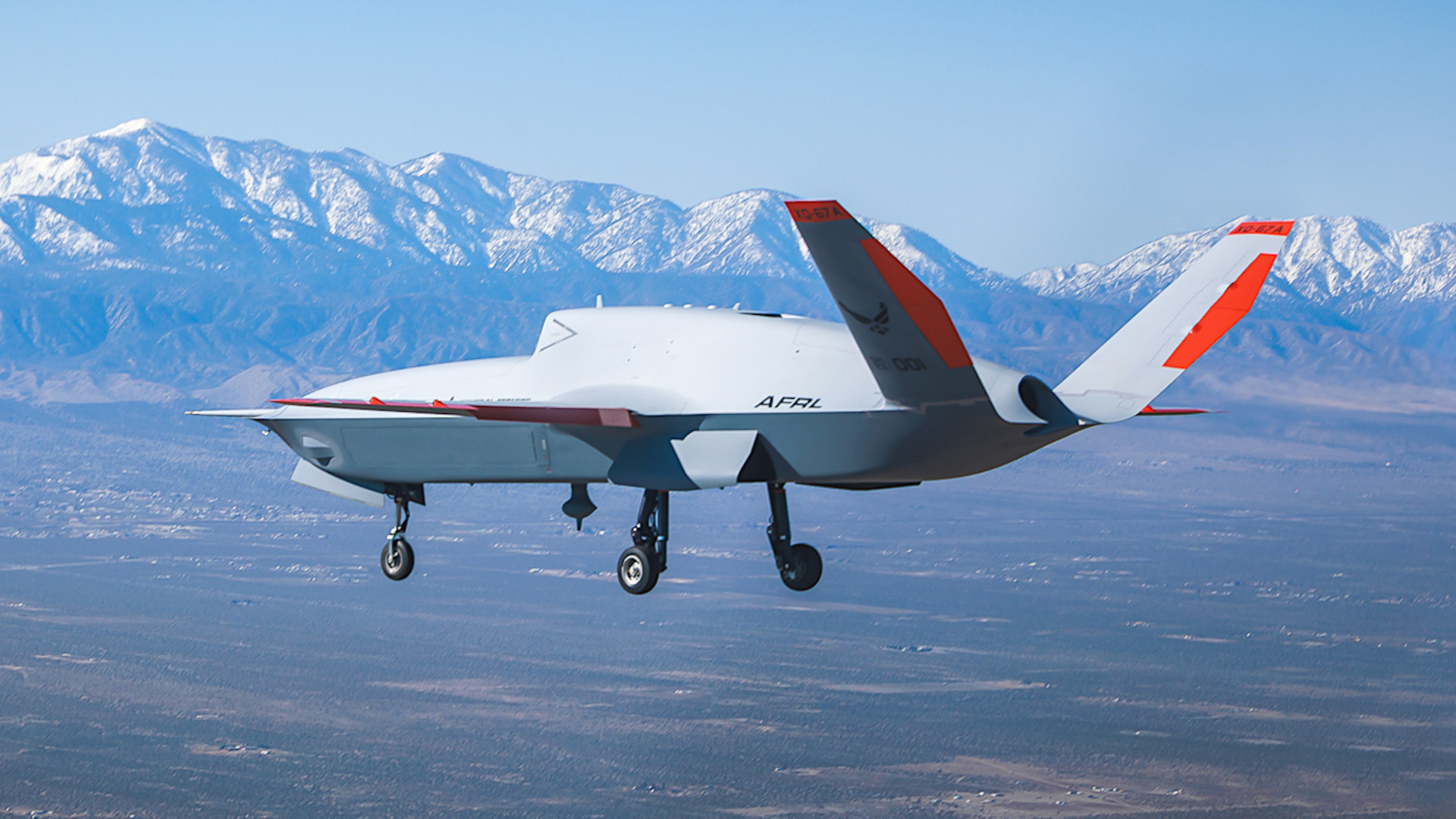General Atomics Aeronautical Systems (GA-ASI) XQ-67A drone, which was built for the U.S. Air Force’s secretive Off-Board Sensing Station (OBSS) program, has flown for the first time. The Air Force sees OBSS as an important next step in advanced drone concepts, both in terms of scalable, iterative development and low-cost, rapid production.
The War Zone was the first to report on the unveiling of the XQ-67A and you can learn what we know about this design and its program, as well as what we don’t in our initial feature here.

The Air Force Research Laboratory (AFRL), which is leading the OBSS program, announced the XQ-67A’s maiden flight, which took place yesterday at General Atomics’ test facility at Gray Butte in California. General Atomics received its first OBSS contract in October 2021, along with Kratos, but was subsequently chosen to proceed alone to the next phase of the effort involving actually building and flight testing its design.

General Atomics had previously released a video of the XQ-67A on the move on the ground, typically the last phase of testing before a first flight.
The aerial images of the stealthy-looking XQ-67A offer additional views of the design with its retractable tricycle landing gear, broadly splayed v-tail, low-sweep main wing, and top-mounted dorsal engine intake.
Along with the announcement of the XQ-67A’s first flight, AFRL has provided a host of new details on the OBSS effort, information about which has previously been scant.
“The XQ-67A is the first of a second generation of autonomous collaborative platforms, or ACP. Following the success of the XQ-58A Valkyrie, the first low-cost uncrewed air vehicle intended to provide the warfighter with credible and affordable mass, the XQ-67A proves the common chassis or ‘genus’ approach to aircraft design, build and test,” AFRL’s press release says, citing Doug Meador, an autonomous collaborative platform capability lead in its Aerospace Systems Directorate. “This approach paves the way for other aircraft ‘species’ to be rapidly replicated on a standard genus chassis. This new approach also responds to the challenge of great power competition by speeding delivery of affordable, advanced capability to the warfighter.”

“This provides an alternative acquisition approach for military aircraft that enables faster development, lower costs and more opportunities for frequent technology refresh,” Trenton White, OBSS Program Manager and aerospace engineer at AFRL’s Aerospace Systems Directorate, also said in a statement accompanying a press release from GA-ASI. “XQ-67A is the first ‘species’ to be designed and built from this shared platform. Flight demonstration of this system is a major first step toward showing the ability to produce affordable combat mass.”
“[The XQ-67A] OBSS is the first aircraft type built and flown using a common core chassis developed by GA-ASI that promotes commonality across multiple vehicle types,” GA-ASI Vice President of Advanced Programs Michael Atwood also said in the press release.
The first flight of OBSS is clearly a big step forward in the USAF’s future vision of an air combat inventory that will be increasingly dominated by advanced unmanned systems.
An update to this story with a deeper look into what is now known about the OBSS program will follow shortly.
Update 10:35 PM EST:
You can find The War Zone‘s further exploration of the new information that the Air Force released about the OBSS program and adjacent efforts here.
Contact the author: joe@twz.com
